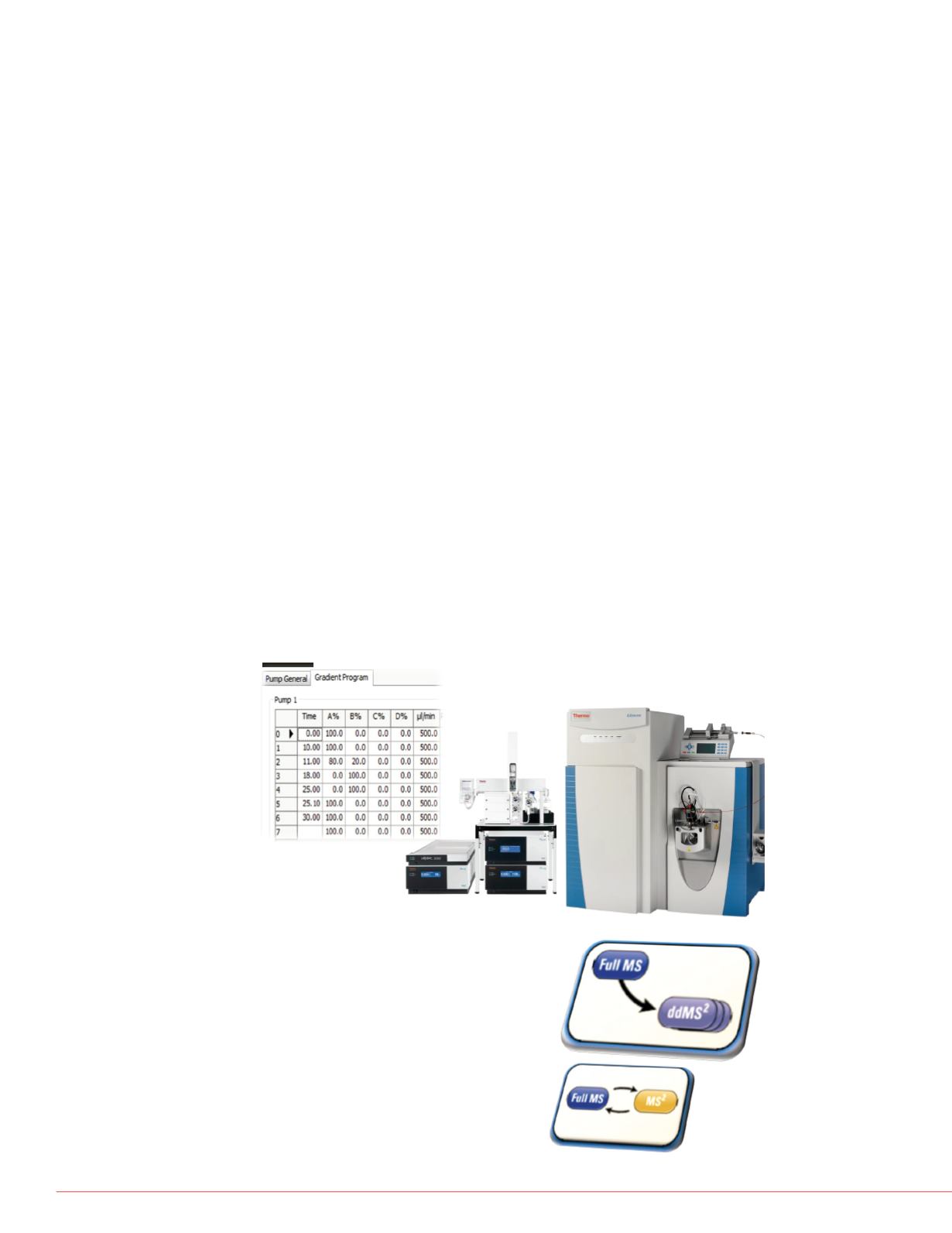

2
A Novel Screening Method for Anthropogenic Sewage Pollutants in Waste Water, Ground Water and Drinking Water Samples by LC–HRAM Analysis
Overview
For the present study, the Thermo Scientific™ Q Exactive™ mass spectrometer was
coupled with an Thermo Scientific Accela
™ Open Autosampler to do fully automated
high-volume injection and sample enrichment of up to 5 mL sample volumes. Samples
from waste water to drinking water were investigated for anthropogenic compounds in
the water cycle down to low ppt concentration levels without time consuming solid
phase extraction for screening of all kinds of water matrices.
Introduction
In the last decade, there has been growing public concern about potential
contamination of water and the environment with anthropogenic compounds and their
degradation products and possible negative impacts on nature and public health. As a
response, there is an increased interest in more efficient screening techniques for
larger numbers of possible pollutants compared to those traditionally carried out by
triple quadrupole mass spectrometers. Full scan MS with high-resolution and accurate-
mass does not require optimization of compound-specific parameters and has the
ability to properly separate matrix interferences from compounds of interest. A
combination of software suites covering the workflow make it possible to acquire and
process data on the fly. Data mining in several fields of investigation side by side can
help get the full picture about contaminants.
Methods
Sample Preparation
Water samples of each location were filtered through 0.25 micrometer PTFE syringe
filters prior to analysis.
Liquid Chromatography (or more generically Separations)
Chromatographic analysis was performed using the Thermo Scientific Accela Open U-
HPLC system.
Chromatographic conditions were as follows:
Column: Thermo Scientific™ Hypersil™ GOLD
aQ C18 column, 100 x 2.1 mm, 3.0
μm
particle size.
Mobile Phases: A (Water), B (Methanol) ; both buffered with 5 mM ammonium formate
+ 0.05 % formic acid. Sample Injection Volume: 0.25
–
5 mL; Column Temp.: 25
°
C
Gradient
Mass Spectrometry and Source Conditions
HR/MS Scan Range: 120 to 1200 (
m/z
)
Polarity switching: off
Resolution: 70k (Full scan), 35k (ddMS2)
HDC Fragmentation: Collision Energy 35 eV
Heated Electrospray Ion Source
Spray Voltage (pos/neg): 4800 V / 3800 V
Capillary Temp 300
o
C
Sheath Gas: 60, Aux Gas: 15 (Ion Sweep Gas: 1)
Vaporizer Temperature: 350
o
C
Data Processing Tools
Thermo Scientific™
Exa
processing of generated
approaches with a simpl
Match, customized comp
find compounds of intere
retrospective data analys
SIEVE™, Thermo Scient
softwares as well as a C
search based on elemen
signals. With these softw
directions simultaneously
recommended to have a
combination Full Scan M
information for possible f
Results
Mapping the Water Cyc
The sampling area comp
waste water plant (WWT
catchment area, and a re
To show the impact of a
SIEVE software has bee
pollutants to drinking wat
Tramadol. These are kno
tracer substances.
By applying differential a
get first information abou
reference. In terms of ha
comparison of the comp
generated and a visual di
chromatograms. SIEVE
identification of the comp
Figure 2 shows the heav
to its receiving water cou
receiving water course to
SIEVE and its automatic
helpful in terms of showi
course by having instrum
FIGURE 1. Sample Cha
FIGURE 2. Location Su



















